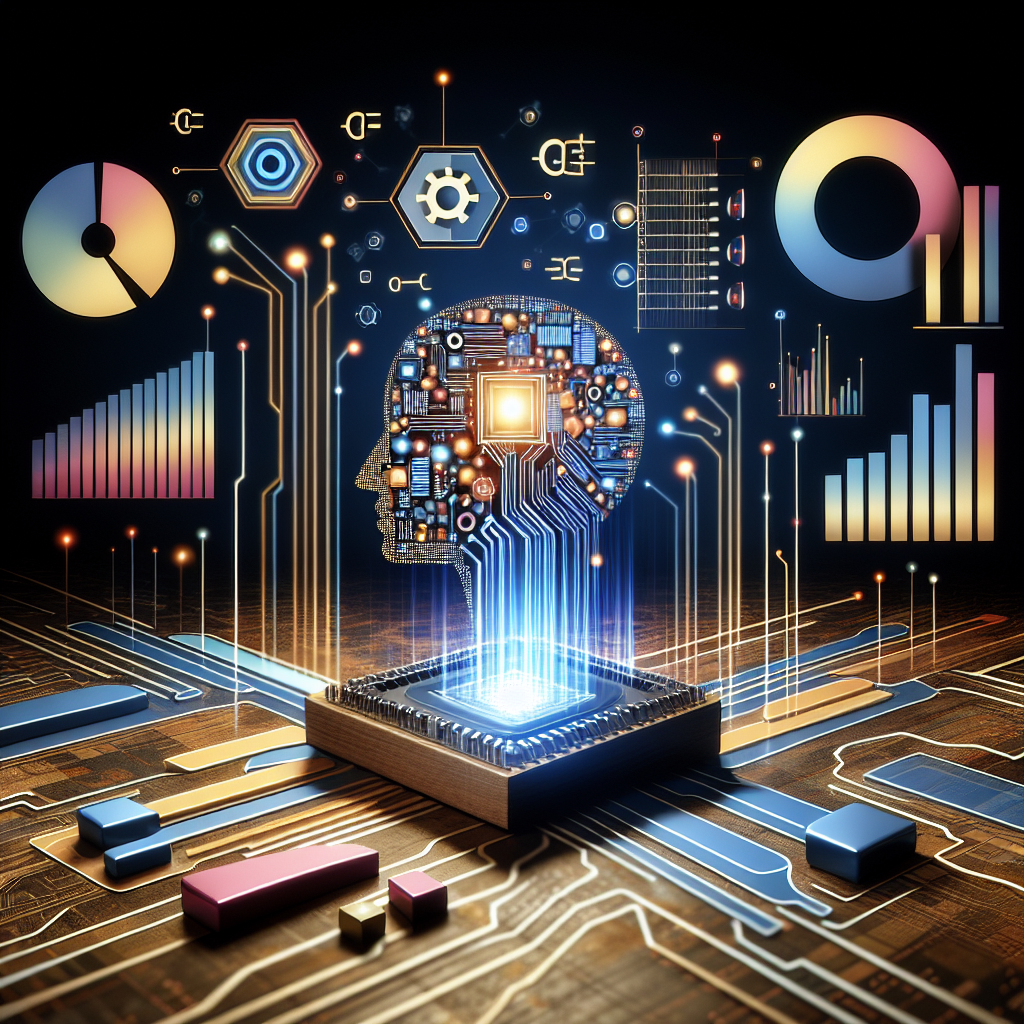In today’s fast-paced and data-driven business environment, companies are constantly seeking ways to gain a competitive edge and drive growth. One of the most powerful tools that organizations are leveraging is artificial intelligence (AI) and data analytics. These technologies have the potential to transform business intelligence by providing insights that were previously unattainable, leading to better decision-making, improved efficiency, and ultimately, increased profitability.
AI and data analytics are often used interchangeably, but they are distinct technologies that work together to drive business intelligence. Data analytics involves the process of analyzing raw data to uncover patterns, trends, and insights that can be used to make informed business decisions. On the other hand, AI refers to the ability of machines to learn from data, identify patterns, and make decisions without human intervention.
By combining these two technologies, organizations can harness the power of big data to gain valuable insights into their operations, customers, and market trends. This allows businesses to make data-driven decisions that are based on real-time information, rather than gut instinct or intuition. As a result, companies can optimize their processes, improve customer experiences, and drive innovation in ways that were not possible before.
One of the key benefits of AI and data analytics is their ability to automate repetitive tasks and processes, freeing up employees to focus on more strategic initiatives. For example, AI-powered chatbots can handle customer inquiries, while predictive analytics can optimize inventory management and supply chain operations. This not only saves time and resources but also improves accuracy and efficiency, leading to cost savings and increased productivity.
Another advantage of AI and data analytics is their ability to uncover hidden patterns and insights in data that humans may not be able to see. By analyzing large volumes of data from multiple sources, these technologies can identify trends, correlations, and anomalies that can provide valuable insights into customer behavior, market dynamics, and competitive threats. This allows organizations to anticipate changes in the market, identify new opportunities, and mitigate risks before they become major issues.
AI and data analytics are also helping organizations personalize their customer experiences and improve customer satisfaction. By analyzing customer data and behavior, companies can create targeted marketing campaigns, recommend products and services based on individual preferences, and provide personalized customer support. This not only enhances customer loyalty but also increases sales and revenue by delivering the right message to the right customer at the right time.
In addition to improving business intelligence, AI and data analytics are also transforming industries such as healthcare, finance, retail, and manufacturing. In healthcare, AI is being used to analyze medical images, predict patient outcomes, and personalize treatment plans. In finance, AI-powered algorithms are helping to detect fraud, optimize investment portfolios, and improve risk management. In retail, AI is being used to analyze customer data, optimize pricing strategies, and enhance the shopping experience. In manufacturing, AI-powered robots and sensors are improving production efficiency, reducing downtime, and ensuring quality control.
Despite the numerous benefits of AI and data analytics, there are also challenges and concerns that organizations need to address. One of the main challenges is the need for skilled data scientists and analysts who can interpret the results of AI algorithms and apply them to real-world business scenarios. This requires a combination of technical expertise, domain knowledge, and critical thinking skills that are in high demand but short supply.
Another challenge is the ethical and privacy implications of using AI and data analytics to collect, analyze, and store vast amounts of data. Organizations need to ensure that they are complying with data protection regulations, such as the General Data Protection Regulation (GDPR), and that they are using data in a responsible and transparent manner. This includes obtaining consent from customers before collecting their data, ensuring data security and confidentiality, and being transparent about how data is being used and shared.
To address these challenges, organizations need to invest in training and upskilling their employees, developing clear data governance policies, and establishing robust data security measures. They also need to foster a culture of data-driven decision-making and innovation, where employees are empowered to use data analytics to drive business growth and competitiveness.
In conclusion, AI and data analytics are transforming business intelligence by providing valuable insights, automating processes, and improving decision-making. By harnessing the power of big data and AI algorithms, organizations can gain a competitive edge, drive growth, and innovate in ways that were not possible before. However, to fully realize the benefits of AI and data analytics, organizations need to address the challenges and concerns associated with these technologies and invest in the right people, processes, and technologies to succeed in the digital age.
FAQs:
Q: What is the difference between AI and data analytics?
A: AI refers to the ability of machines to learn from data, identify patterns, and make decisions without human intervention. Data analytics involves the process of analyzing raw data to uncover patterns, trends, and insights that can be used to make informed business decisions.
Q: How can AI and data analytics help businesses?
A: AI and data analytics can help businesses by providing valuable insights, automating processes, improving decision-making, personalizing customer experiences, and driving innovation.
Q: What are some of the challenges of using AI and data analytics?
A: Some of the challenges of using AI and data analytics include the need for skilled data scientists and analysts, ethical and privacy concerns, and data security issues.
Q: What can organizations do to address these challenges?
A: Organizations can address these challenges by investing in training and upskilling their employees, developing clear data governance policies, establishing robust data security measures, and fostering a culture of data-driven decision-making and innovation.

